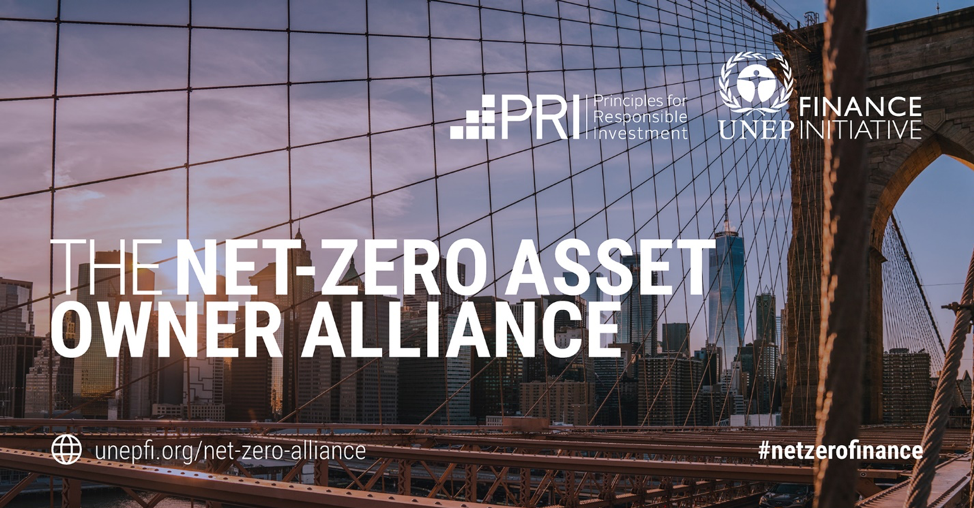Ain Aaviksoo, CMO of Guardtime Health on ‘Estonia’s Blockchain Case Study’ at Converge2Xcelerate | ESG News – Boston, MA
Ain Aaviksoo, CMO of Guardtime Health on ‘Estonia’s Blockchain Case Study’ at Converge2Xcelerate Conference (Boston, MA)
HIGHLIGHTS
- Blockchain technology in healthcare market to reach $42.1 million by 2023
- Guardtime launched MyCPR platform with over 30 million NHS patients in UK
- MyCPR will improve medication adherence & potentially save healthcare industry $290 billion
FULL COVERAGE
INTERVIEW TRANSCRIPTS: Ain Aaviksoo, CMO of Guardtime Health
Ain Aaviksoo – CMO,Guardtime Health: 00:00
So I’m speaking on behalf of a company that I joined a year ago, but most of the story comes from the time that was prior to Guardtime when I was on the secretary off East services and innovation at the minister of social affairs. And Estonia basically the responsible and the overseeing the implementation of this blockchain technology. So I’m going to give a little bit of a context when people tell that in healthcare Estonia is barely digitized. It wouldn’t be possible if we hadn’t the overall Estonian society really embedded with digitalization. So you saw this nice plan says we have 1.3 million people living approximately on the, on the size of a country like the Netherlands or Denmark. So we like space around us, but at the same time also like four G connection. No when there is like nobody around us in the vicinity of next 10 kilometers.
Ain Aaviksoo – CMO,Guardtime Health: 01:01
So it is really pervasive. So that did start before the blockchain era. Also, it is important that it’s not only the public sector or this is not only companies. This is again, another example of how the whole society has done something together and they like it. And that kind of gives also the resilience of keep innovating all the time now and within this context. Yes, healthcare is also digitized. And a while I told there was 1.3 million people but much, but in a month, 2.3 million theories will be done by doctors. And there will be few NF reflections. But the whole premise is that since the very beginning the core purpose of digitalization off country and including that also healthcare has been integration. So we’ve heard up here several times that, you know, integration, we need to do this in healthcare and this is a problem for us.
Ain Aaviksoo – CMO,Guardtime Health: 02:02
It’s the other way wrong. And then also you’re going to see why the way we have implemented blockchain might be not kind of directly applicable, but at least from a technological point of view, but also conceptual. I think it would help also something practical that is done here. The other thing is that the Sonia is relatively poor country. When we stopped the digitalization. I think our we were the all of the 25 EU member States. We worked from the bottom, either the last one or the second boss in our GDP per capita. So efficiency in using digital tools or actually excuse of using digital tools again has been important thing. So we don’t spend much on healthcare at the same time. If you look on the upper side, this is really just, just to give kind of visual image.
Ain Aaviksoo – CMO,Guardtime Health: 03:02
At least we are on average in providing healthcare to people. So we spend, you know, less than most of the developed countries, but we can with that limited amount of money achieve quite a good result. And you can also see the administrative costs. So the costs that our insurance, we do have social insurance model are pretty much like the Germany which means which means that it’s paid by employers for payroll taxes, but it is mandatory. And also the governance agency is not directly responsible to the government, but to the parliament. So it’s a corporate public entity. It’s independent from politics, but it’s manages its funds as a public entity. And you see that the administrative costs are going down, a dollar down. And this is because we do things digitally. So that is what has been the premise from the start.
Ain Aaviksoo – CMO,Guardtime Health: 03:57
And to summarize all that, there are a few things you can’t do digital in Estonia you can’t marry, you can’t divorce, you can’t send a real estate. Those are considered the higher risk activities. Now when somebody from the state needs to stand beside you and look into your eye and say is this really the thing that you want to do? Everything else you can do digital and digitally means I can do it from here, from Boston, I can vote from here. I can sell my old car from here I can, you know, look how my kid is doing at school and, and I can open, okay my Gates or sign all the documents as I am a general manager of the company assigned contract. So everything you can do digital. Now where did it start? It started roughly around 2000. Then we had the prime minister who was a really visionary, but he was also a stubborn guy.
Ain Aaviksoo – CMO,Guardtime Health: 04:58
He said, I want my government entities to talk to each other. Had people started to sell, well it’s complicated. It may be costly. Well bring me some people, tell me how this can do. And then there were multinational companies coming to Estonia some of them from US, from Germany and others. And they presented that that time, you know, what solutions they had and projected the cost of ownership for the next 10 years. And the main problem with all of them was that they all had two zeros too much in the end of the price that the company couldn’t afford that. So it turns to its own engineers. And so you can see the timeline here, you know, it started with reporting taxes, 15 minutes. All the tax are filed pre-populated. You get rebates from the government within five working days. So very nice convenient services.
Ain Aaviksoo – CMO,Guardtime Health: 05:50
Then the private sector provided them parking. They don’t need to carry coins wherever they go and all the things. And in 2002 I think most of the digital infrastructure was laid down. We had digital identity. We have security or secure transport payer I’m going to come back about in a second. And then other services, ID bus ticket that is provided by the private sector using the same year for stocks for the public sector providing. 2007 and forward mobile ID. So in addition to ID card, now we have, we and I mostly use my mobile ID to identify myself e-prescription in 2010 e-health system 2008 all pooled those things and they now pay attention. Something happened in 2007.
Ain Aaviksoo – CMO,Guardtime Health: 06:40
And if I go back to the previous slide, all these things, at least from the user point of view, we’re gone for two or three days, couldn’t use it, had to close it down. We had state sponsored DDS attack and then government and actually people started to think as well we are now in a problem. So what are we going to do? What are we going to do with our society? And the idea was that not to abandon what had been created, but actually if everything you know about your people who owns what land, who’s married to who, what is more health record know who owes who, how much somebody is digital and somebody presents your data, how do you know this is true?
Ain Aaviksoo – CMO,Guardtime Health: 07:33
And so the challenge was both to engineers build us a machine which is capable of proving time, integrity, and the origin of any data regardless of also any trust, centralized trust authority, which means the government dominant asked engineers, build us a machine that can actually verify the data without us. Because we know governments while we sometimes we like them all, we split half and half, but nevertheless where we have to engage with them. But the system needs to be independent from the government. So there are two things that the next slide you’re going to see the solution which is built in blockchain, but there is, this is very important. What was the problem? So in 2007, nobody knew what blockchain is. Nobody was using the term so that it didn’t start from the tech and start from the problem. First features of this problem. It is very specific about the notability and there is no anonymity us.
Ain Aaviksoo – CMO,Guardtime Health: 08:39
And the third bit is it has to scale. It has to scale across the government across all it’s departments and also it has to scale across the private sector. So those things were there from the very beginning. And so this, you know, pay as a solution. Elegant one, maybe some say it’s too simple. You take any data assets, you calculate one way cryptographic hash, a fingerprint, which is preserving my privacy because the fingerprints tells I was here, but you cannot calculate back my other features from that fingerprint. You record a fingerprint on a blockchain distributed network, give back owner of that data, assets, a receipt, validating the time, the entity and that this document hasn’t been changed. And now anytime this owner shows the state assets to any other doctor, the receiver can independently verify the authenticity.
Ain Aaviksoo – CMO,Guardtime Health: 09:42
And that’s it. That’s what you use blockchain in Estonia and you use it at scale. So, the data assets can be doctors’ reports, MRI scan. It can be full genome sequencing, it can be just a log. So any size of the data, which is also very important healthcare. So many other blockchain solutions have the problem for the scalability because then there’s just too much information. Yes, there are different hybrid solutions. I’m going to come back to that, that we are using also the public and permissionless blockchain for smart contracts. But remember the original ask by the government wasn’t to build us a smart contract system. It was to build a something that helps to protect the mutability. So another thing is that you scale it up and then the most really the most wonderful thing is that what is the Trust anchor?
Ain Aaviksoo – CMO,Guardtime Health: 10:46
Trust Anchor is a newspaper while the witness devotees something a few several years ago used in order to verify that he was the author of one of his inventions. So he used the same kind of hush published in the newspaper and later on, nobody couldn’t claim that he wasn’t the author of that or actually nobody else could claim that they were the author. So the root hash every month is published in Financial Times and LinkedIn and Twitter and a few other papers. And what does that get? It? It gives us immunity because it doesn’t matter how much computation power you have. In order to change the trust anchor, you would need to collect all the Financial Times globally, roughly 250,000 copies from all the libraries, change the hash from there, put them back in the running joke places, and then you can prove this was something different.
Ain Aaviksoo – CMO,Guardtime Health: 11:52
So we believe this is pretty much a kind of reliable solution that once you have your data assets, which is signed with that document and you trust, the mathematics and this is in EU ADA accredited service. And it is basically even out of our control for being distributed that this is this independent trust layer that enables you all to do the following things. So this is what has been provided and our approach in Estonia and also now when I’m working at Carta is that, and we heard that I really have enjoyed all those previous sessions. Everything is a process. So the most secure way to keep your data is buried deep down on the ground and make certain that nobody ever sees that. Not very useful. So actually in order to make the data useful, you need to start, you know, moving it around or making, getting access to it or building some sort of processes which happen over time. And then the trust comes from the fact that you know that you know if you are down the street that will has been presented to you is trustworthy. But also that if your data is being floating around somewhere, you know what is actually happening with that.
Ain Aaviksoo – CMO,Guardtime Health: 13:18
And so, we built a blockchain back. The healthcare industry. No data is not on blockchain. It still resides where it is. But what we do have is that the final medical records all are immutable, signed and all the logs which are happening, both internal 30% of data breaches are due to either deliberate or just mismanagement, internal threat or outside doctor add something or another doctor access the file from another one. And this information is made available to every citizen this logging, which means that if any doctor looks at my file, I know that immediately. And there are also automated services on top of that which enable to understand me if something odd is happening. So again, the cost part of the blockchain which gives this a trust is very low because again, be part of other security problems. Our sales stove in the old way. In a nutshell the system enables our tactical. Please bear with me. This is the technical assumption that any data for any professional at any place is available at any time. This is not the case in real life. You use different security measures or use different rules and to use blockchain to verify the own the things that are allowed to happen for those individuals who are authorized to do so are actually happening. But this is a circle and really, I think the slides will be made available to you. And the whole idea is that actually now we are starting to kind of rebuilding the services in a renewed way.
Ain Aaviksoo – CMO,Guardtime Health: 15:12
And won’t spend too much time on this, but I just hope you’re taking me for my word that how we balance this accessibility is using the transparency because we believe that the data, all myself, I at least should have some control over. Yes, there are, let’s say possibilities whereby the default condition in healthcare is that my files from the hospital are made available to all the GP or family doctor next, next day. But I can opt out so I can close that from happening. And when I see the doctor in the office, again, opening that file to this doctor at his office is made very simple so that you balance the technical capability of connecting everything with everything. But also, you build the service layer on top of that controlled monitored with every second frequency using blockchain. What’s the value?
Ain Aaviksoo – CMO,Guardtime Health: 16:14
It’s pretty new. Rapid scaling. So we started with digital prescriptions a few years later than days or Catalonia in Europe. In Denmark. It took four years to get to 80% in Estonia it was nine months. Actually. It was a surprise for us, for us as well, the, the systems rather capable that we’re built to, to process those digital prescriptions. They had to there were a few logical mistakes in the data architecture. So it was stalled for two weeks because it couldn’t actually serve as many people. Initially it was kind of intended for a much longer a scaleup. Second, you do get efficiency from that. Again, this was built by the government. So the reasoning behind that was also government led. And if you read the last bullet points, you can see that the idea was to use that data and actually enable people to use more generic drugs as compared to branded drugs.
Ain Aaviksoo – CMO,Guardtime Health: 17:18
And it actually was achieved in relatively short period because the digital prescription, but also some clinical decision support systems were combined together so you can start building various things. And this slide I’ve I should add the recent version because the 2018 numbers actually the red one is important that we didn’t start building these digital when everybody, you know, loved that the trust level of our genetic data to be combined with healthcare data was about 18%. But it doesn’t prevent you from starting. And if you’re managing your services in a way that the give back people delivered off those nice services that are, as I mentioned with the tax authority or in healthcare also, this is a prescription. The trust grows over time. You’re kind of create it from void. But this is necessary.
Ain Aaviksoo – CMO,Guardtime Health: 18:19
And also, we’re using blockchain to keep and maintain the trust much to go away. So again, and I’m starting to summarize, my time is over I believe in a few seconds. So your bill it in a stacked way. So if needed, there is also security server all and by department of defense of US government, which by the way is the largest customer of Guardtime. So Guardtime did not start from healthcare. We start first from defense and telecom and then you build services like provenance trail, your build consent on that. We heard a few examples and then we also have done integrations with distributed ledgers, which are permissionless and public, which means that the smart contracting bit, you’ll know what data comes there or where the data comes from. If you have different DLTs that need to be combined with each other, you can easily do that.
Ain Aaviksoo – CMO,Guardtime Health: 19:22
So, but you don’t constrain yourself with heavy engineering, you know, setting up 500 nodes for US pharma supply chain, I think there are very few technologies which are capable of doing that. But if you start, you know, from the right order, this is the possibility and also if you combine now blockchain with other reparative technologies, what you get is that you can differentiate between what we call data liquidity. That is when the data actually with PII moves from one place to another to data visibility to when, when you allow only access, some machines do and a multi-party computation of zero knowledge proof or whatever. And they present the end result for instance, outcome-based contracting insurance and provider and pharma company. They all basically see the same result without compromising the private stuff in your videos because that data was never showed to all the others.
Ain Aaviksoo – CMO,Guardtime Health: 20:21
But at the same time, if pharma and insurance are about to agree in payments of hundreds of millions or billions, they need to be certain that this data, which the competition is based upon is trustworthy. So these are the projects that the government can implement now because we have this infrastructure. So, and this is kind of my way of articulating that this is the future of healthcare that I can see making pockets of excellence in many other countries currently. Also, you know, time is working also in this country, but we’re working very closely with Nordic countries, NHS in England and Spain. So it is possible. I can certainly assure you, and I’m going to finish with three statements. Start with a problem and then you’ll find the right combination of technology. In our case, it was really the integrity that we use.
Ain Aaviksoo – CMO,Guardtime Health: 21:27
We don’t use it for transport. We don’t use it for confidentiality. In our research labs, there are people who are talking about blockchain, back quantum in known identity management as well. But you do not need to start from there to start reaping the benefits of blockchain. And my final slide comes from this very tone I was enlightened myself. And if all the thinking and the way how John Halamka put it, what you can do, what is meaningful to use. And I think you should read the journal. It seems that it’s spreads.










